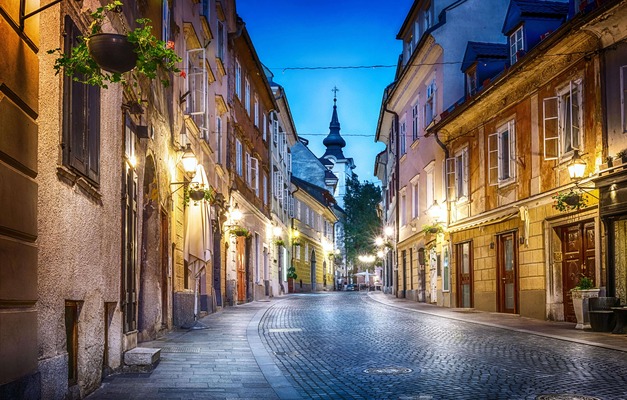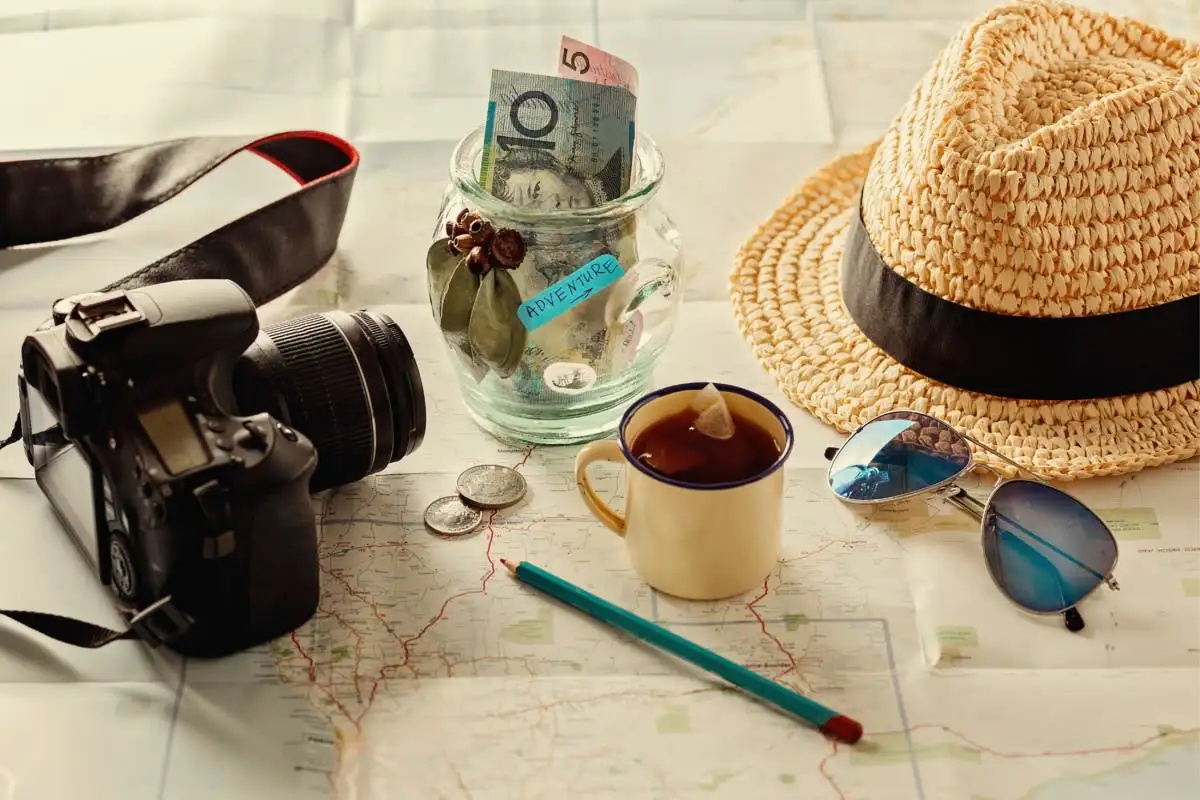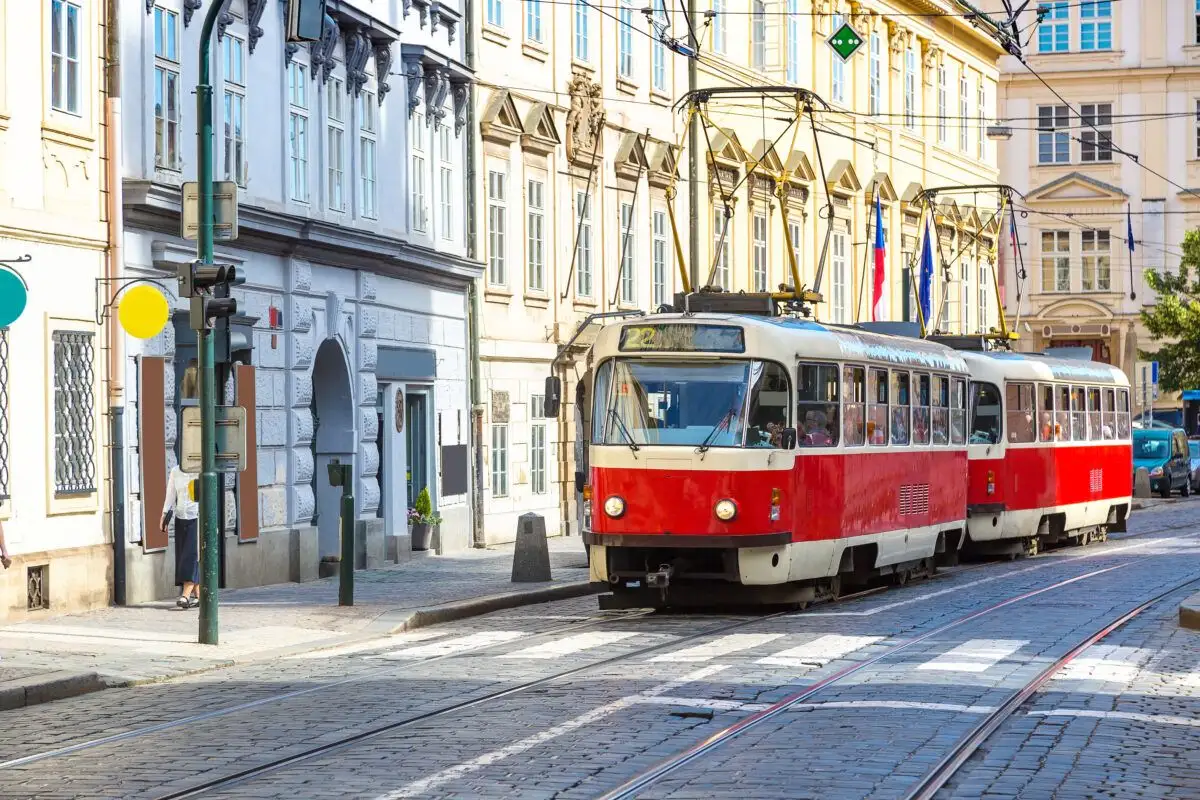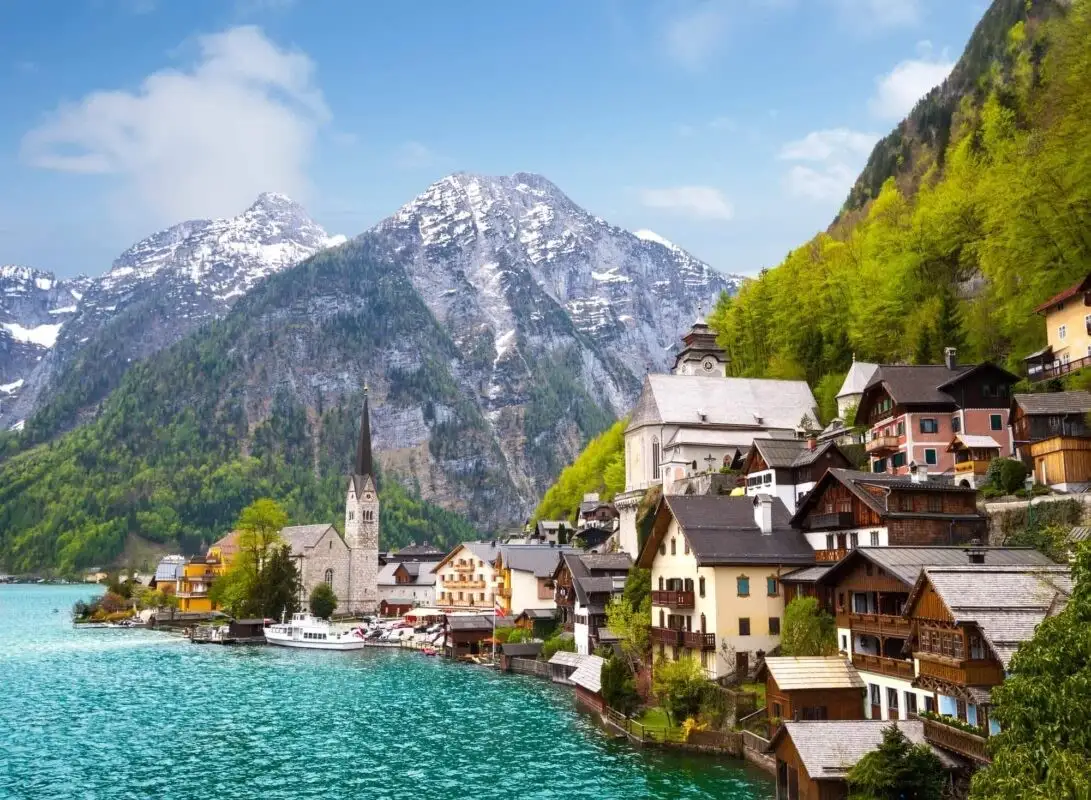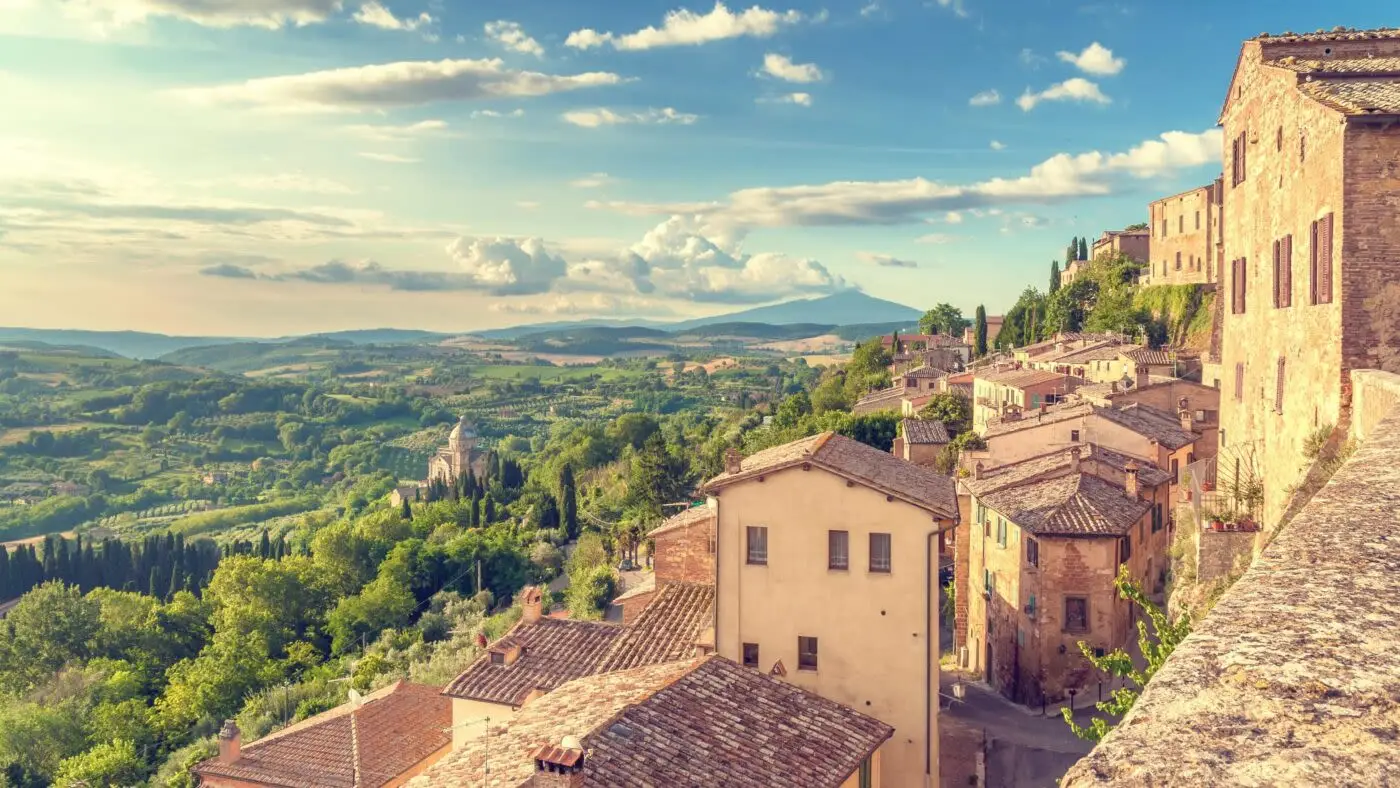
Sacred Rome: A Journey Through History and Faiths
 5 Day Tour of Rome
5 Day Tour of Rome
Overview
Trip Map
Itinerary
Inclusions
Reviews







5 Days 4 Nights
Best Time: Jan-Dec
Churches & Sacred Sites
History Buffs
Immerse yourself in the timeless beauty of Rome with our 5-day tour highlighting the city's most sacred and historic sites. You'll visit the awe-inspiring Vatican City and the ancient Pantheon, and explore the rich history of the Jewish Ghetto. The journey offers a perfect blend of inspiring religious architecture and cultural exploration. Wander through Rome’s glorious piazzas, marvel at its stunning fountains, and discover the vibrant food culture that thrives in this ancient city. With private guided tours, insider tips through our mobile app, and detailed travel guidance, you’ll experience Rome like never before.
- Explore Vatican City, home to St. Peter's Basilica, the Sistine Chapel, and the Pope.
- Discover the ancient splendor of the Pantheon, a pagan temple converted into a Christian church.
- Wander the narrow streets of Rome's Jewish Ghetto, discovering its rich history and culture.
- Stroll through Piazza Venezia, admire the monument to King Victor Emmanuel, & visit Trajan's Market.
- Relax in the beautiful Villa Borghese Gardens and enjoy the world-class art at Galleria Borghese.
Immerse yourself in the timeless beauty of Rome with our 5-day tour highlighting the city's most sacred and historic sites. You'll visit the awe-inspiring Vatican City and the ancient Pantheon, and explore the rich history of the Jewish Ghetto. The journey offers a perfect blend of inspiring religious architecture and cultural exploration. Wander through Rome’s glorious piazzas, marvel at its stunning fountains, and discover the vibrant food culture that thrives in this ancient city. With private guided tours, insider tips through our mobile app, and detailed travel guidance, you’ll experience Rome like never before.
- Explore Vatican City, home to St. Peter's Basilica, the Sistine Chapel, and the Pope.
- Discover the ancient splendor of the Pantheon, a pagan temple converted into a Christian church.
- Wander the narrow streets of Rome's Jewish Ghetto, discovering its rich history and culture.
- Stroll through Piazza Venezia, admire the monument to King Victor Emmanuel, & visit Trajan's Market.
- Relax in the beautiful Villa Borghese Gardens and enjoy the world-class art at Galleria Borghese.

Colosseum
Historic Landmarks

Vatican City
Churches & Monasteries

Roman Forum & Palatine Hill
Historic Landmarks

Castel Sant'Angelo
Historic Landmarks

Piazza Venezia & Trajan's Market
Historic Landmarks

Pantheon
Historic Landmarks

Trevi Fountain
Historic Landmarks

Circus Maximus
Historic Landmarks
Must see sights

Colosseum
Historic Landmarks

Vatican City
Churches & Monasteries

Roman Forum & Palatine Hill
Historic Landmarks

Castel Sant'Angelo
Historic Landmarks

Piazza Venezia & Trajan's Market
Historic Landmarks

Pantheon
Historic Landmarks

Trevi Fountain
Historic Landmarks

Circus Maximus
Historic Landmarks
Starting from
$1399
per person
 Not included
Not included Secure Your Customizable Trip
Enter your details to embark on a journey that can be tailored just for you.
Start
Travelers
0 travelers
Add Room
Remove Room
Preferred Hotel Stars
Select Hotel Stars
Craft Your Own Itinerary
Select your interests and destinations for a trip plan inspired by you.
Rome in Five Days Trip - Map & Itinerary
Enable/Disable Map Scrolling
Click To Make Map Interactive

Rome in Five Days Trip Timeline
 Edit Details
Edit DetailsArrival
4 nights
Rome
Italy
Departure
Day-By-Day Itinerary of Rome in Five Days Trip

Day 1
Arrive Rome
Day 1
Arrive Rome



11:30 AM
Private Transfer to your Hotel
For your arrival in Rome, we will provide information on the customs and passport procedures. We will schedule a pick up for your flight's arrival time. You will be met at arrivals inside the terminal by a driver holding a sign with your name on it. The transfer is for your party only - you will not be sharing a vehicle. The cost of the ride will be included in your itinerary package and you will be taken directly to your hotel. IMPORTANT NOTE: Please be aware the car service can fit up to 1 checked item of luggage and 1 personal item per person, such as a purse or small backpack. If you think you will have more baggage, please inform your travel consultant as this may result in an additional fee.

Day 1
Arrive Rome


Day 1
Arrive Rome




11:30 AM:
Private Transfer to your Hotel
Mid-Day/Afternoon:
Rome's Historic Center
Late Afternoon/Early Evening:
Spanish Steps

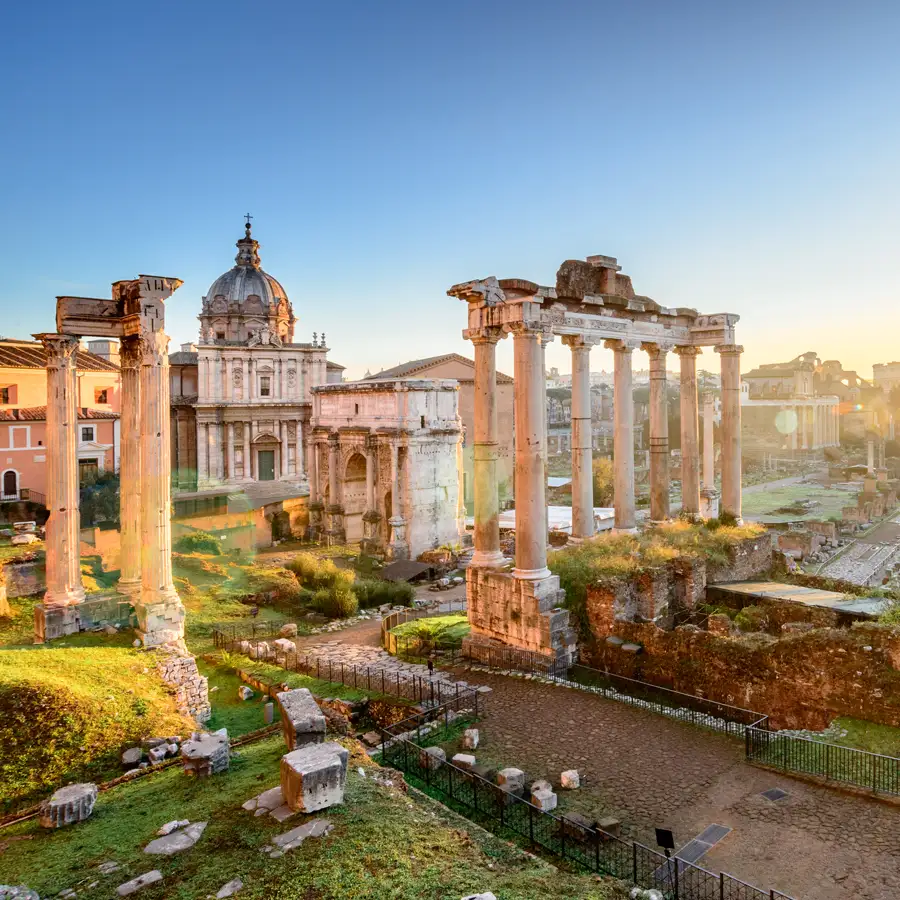
Day 2
Rome
Day 2
Rome



9:30 AM - 12:30 PM
Ancient Rome Guided Walk
On this 3-hour private guided tour, you will explore the imposing remains of ancient Rome. Your guide will explain the extraordinary history of the birth of Rome, life in the city and everything about the fall of the Empire. Visit the Colosseum, the monumental ruins of the Roman Forum, and end the tour on the Capitoline Hill, the smallest and most important of the seven hills of Ancient Rome.
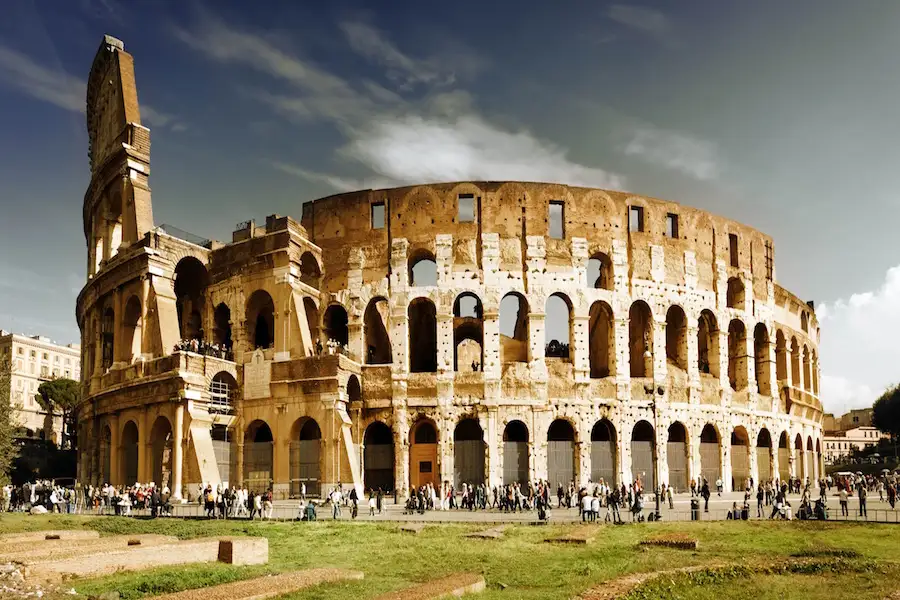
Colosseum
Ancient Roman Ampitheater
Show More

Colosseum
Ancient Roman Ampitheater
Show More

Colosseum
Ancient Roman Ampitheater
Show More

Colosseum
Ancient Roman Ampitheater
Show More

Colosseum
Ancient Roman Ampitheater
Show More
prev
next

Day 2
Rome


Colosseum
 Highlight of Ancient Rome Guided Walk
Highlight of Ancient Rome Guided WalkAncient Roman Ampitheater
Monumental Roman amphitheater once used for gladiatorial games

Colosseum
 Highlight of Ancient Rome Guided Walk
Highlight of Ancient Rome Guided WalkAncient Roman Ampitheater
Monumental Roman amphitheater once used for gladiatorial games

Colosseum
 Highlight of Ancient Rome Guided Walk
Highlight of Ancient Rome Guided WalkAncient Roman Ampitheater
Monumental Roman amphitheater once used for gladiatorial games

Colosseum
 Highlight of Ancient Rome Guided Walk
Highlight of Ancient Rome Guided WalkAncient Roman Ampitheater
Monumental Roman amphitheater once used for gladiatorial games

Colosseum
 Highlight of Ancient Rome Guided Walk
Highlight of Ancient Rome Guided WalkAncient Roman Ampitheater
Monumental Roman amphitheater once used for gladiatorial games
prev
next


Day 3
Rome
Day 3
Rome


Early Morning to Late Afternoon
Vatican City
Rome is unique in the world in that it contains an independent country within its city limits - the Vatican City, from where the Pope administers the Catholic Church. The symbolic center of Catholicism is St Peter's Basilica, the second-largest Catholic church in the world and among the most beautiful. The Vatican Museum contains one of the greatest collections of art in existence, including Michelangelo's jaw-dropping Sistine Chapel. The popes had a bigger influence on Rome than just the collection of art. The Pope's title is actually Bishop of Rome, and popes administed the city for centuries, shaping its architecture & public spaces. Rome was re-built to be an example of urban beauty, and the Vatican was meant to be the showcase within the showcase. Their success is evident from the throngs of visitors who flock here even today.
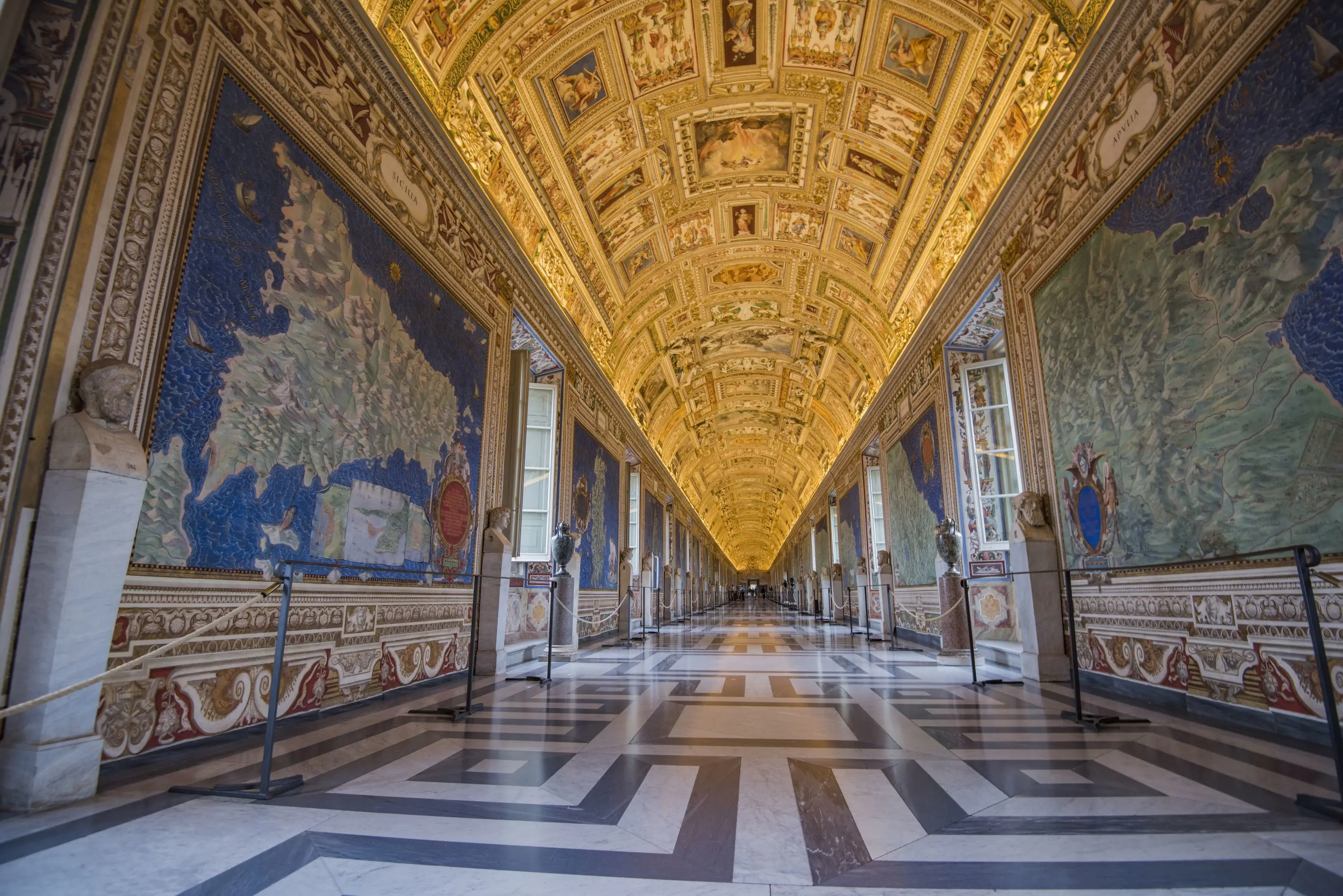
Vatican Museums
Book early if you want to see the Vatican Museum's monumental works of art from the greatest Italian artists of the Renaissance.
Show More
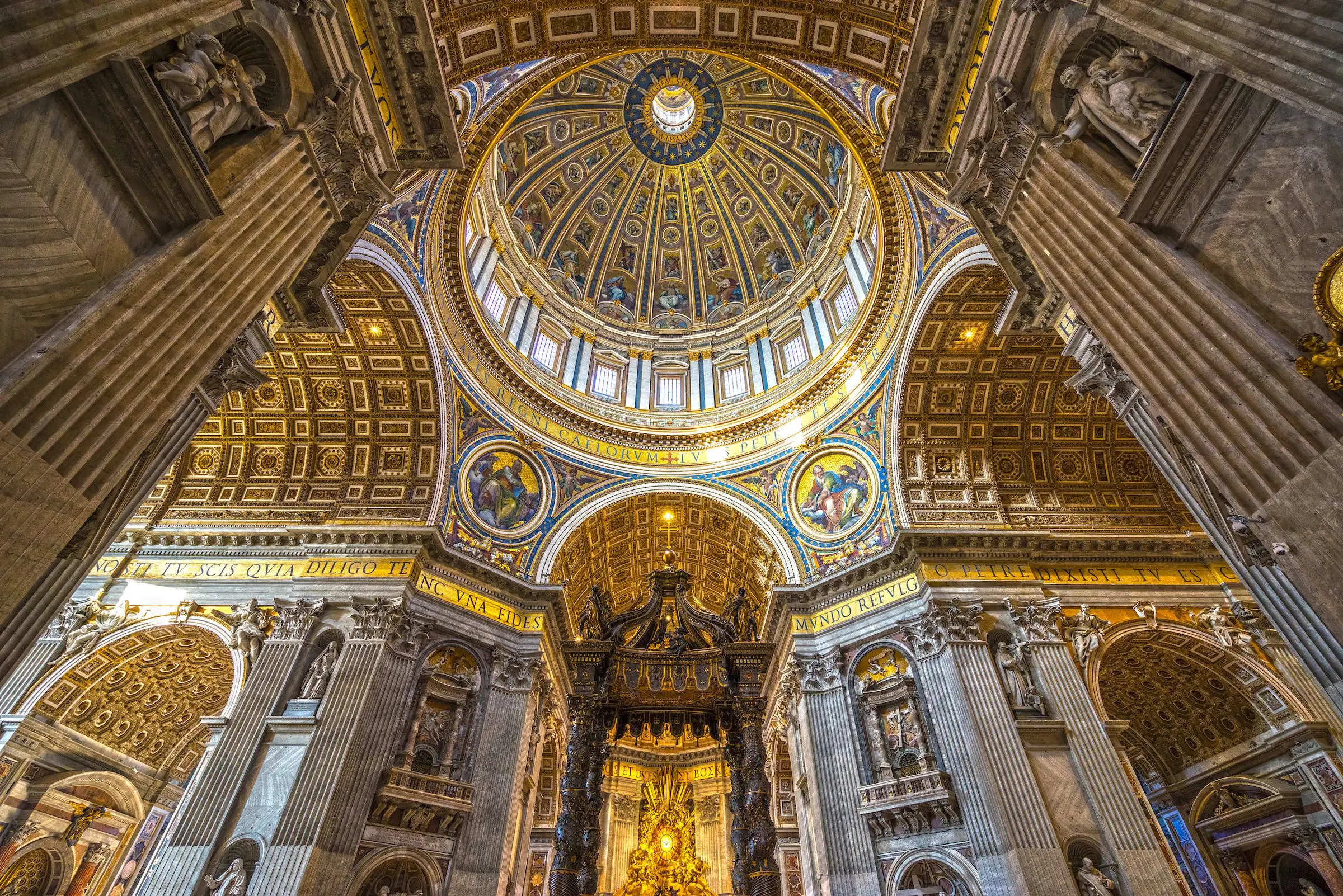
St Peter’s Basilica
Explore the gigantic and incredibly beautiful church known as "the greatest of all churches of Christendom".
Show More

Vatican Gardens
Escape the crowds in this oasis of green hidden behind the walls of the Vatican.
Show More
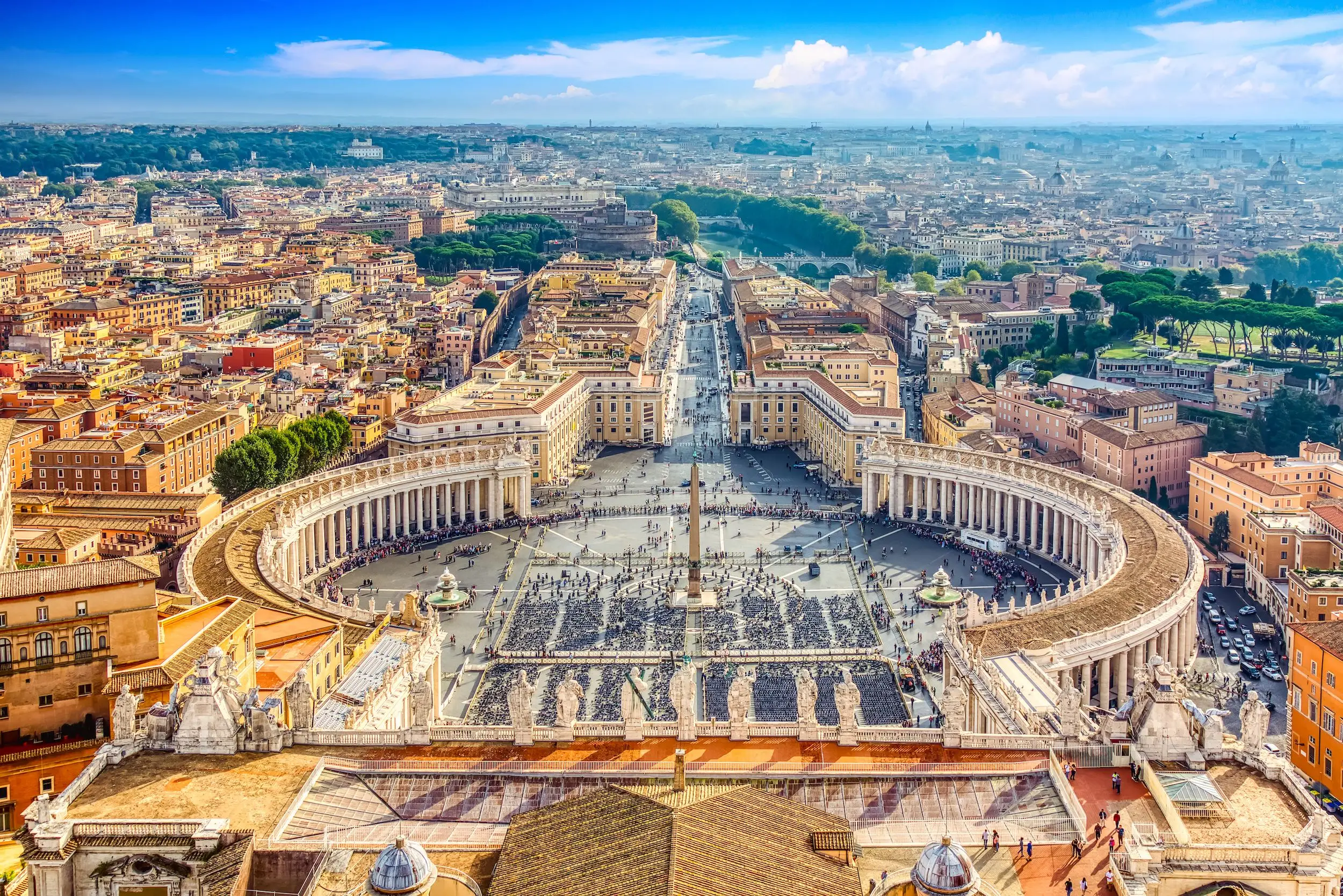
St Peter's Square
Stand in the middle of this famous square in which the faithful gather to hear the Pope give audiences and celebrate mass.
Show More
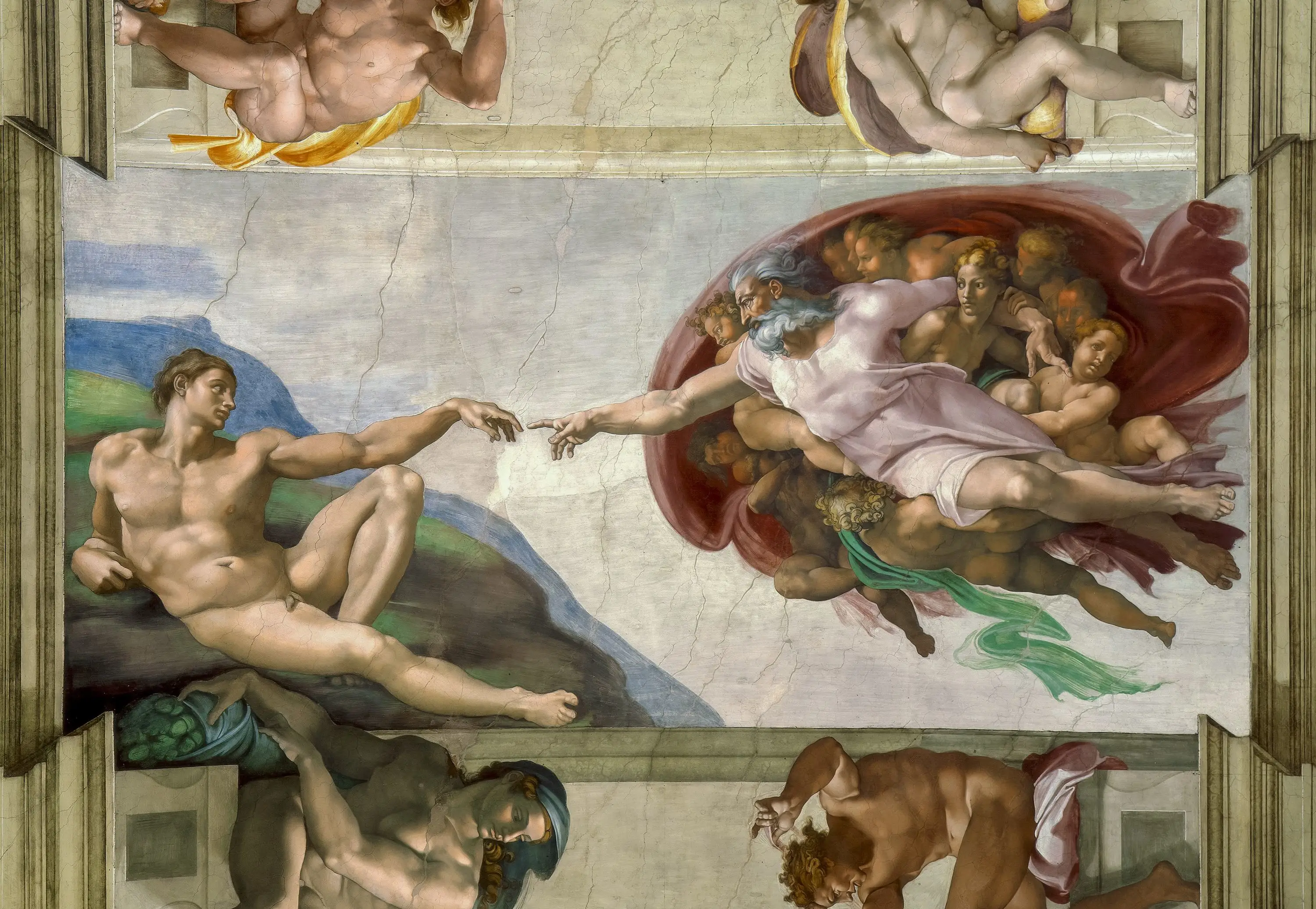
Sistine Chapel
Gaze up at the world's most famous ceiling, the masterpiece of Michelangelo.
Show More

Vatican Museums
Book early if you want to see the Vatican Museum's monumental works of art from the greatest Italian artists of the Renaissance.
Show More

St Peter’s Basilica
Explore the gigantic and incredibly beautiful church known as "the greatest of all churches of Christendom".
Show More

Vatican Gardens
Escape the crowds in this oasis of green hidden behind the walls of the Vatican.
Show More

St Peter's Square
Stand in the middle of this famous square in which the faithful gather to hear the Pope give audiences and celebrate mass.
Show More

Sistine Chapel
Gaze up at the world's most famous ceiling, the masterpiece of Michelangelo.
Show More

Vatican Museums
Book early if you want to see the Vatican Museum's monumental works of art from the greatest Italian artists of the Renaissance.
Show More
prev
next

Day 3
Rome


Vatican Museums
 Highlight of Vatican City
Highlight of Vatican CityBook early if you want to see the Vatican Museum's monumental works of art from the greatest Italian artists of the Renaissance.
The Vatican Museum is actually 26 different museums, which include not only exhibitions but chapels, apartments, and other rooms of the Vatican palace, covering a huge range of fine and applied arts patronized by the popes. There's also an outstanding collection of ancient antiquities (including even the Emperor Nero's red stone bathtub), a gallery of hand-painted maps, and whole rooms turned into works of art. In addition to ancient and medieval works of art, you'll see masterpieces by the "who's who" of the Italian Renaissance, including Raphael, Leonardo da Vinci, Titian, and Caravaggio. Other highlights include panels by the brilliant monk-artist Fra Angelico, works from the Venetian school, including Vavarini, and much, much more. Booking in advance is highly recommended as otherwise you can wait for hours or not even be able to get in at all.

St Peter’s Basilica
 Highlight of Vatican City
Highlight of Vatican CityExplore the gigantic and incredibly beautiful church known as "the greatest of all churches of Christendom".
The basilica is one of the chief pilgrimage sites in the Christian world, and one of the most popular tourist destinations in Rome. The basilica is the symbolic center of the church not only because the Pope frequently celebrates Mass there, but because it is believed that the apostle St. Peter is buried beneath it. Catholics consider Peter as the first Bishop of Rome and "the rock" upon which the Catholic Church was built, in accordance with Christ's instructions. Inside you can admire sculptures by Bernini as well as Michelangelo's famous sculpture of the Virgin Mary holding the crucified Jesus, known as The Pietà. The church's elaborate and impressive golden interior is a sight to behold. Other sights include St Peter's tomb, the Papal crypts in the necropolis under the basilica, as well as the dome, which rewards visitors with views over Rome. Entry is free, but queues to visit the Basilica can be lengthy, so it is highly advised to either get there early or to purchase a skip the line entrance. The dome is also paid entry.

Vatican Gardens
 Highlight of Vatican City
Highlight of Vatican CityEscape the crowds in this oasis of green hidden behind the walls of the Vatican.
Accessible only via a guided tour, the gardens are definitely worth a visit. Just as the Popes have for hundreds of years, you can stroll the gardens and relax amidst the greenery, while taking in the perfect view of St. Peter's.

St Peter's Square
 Highlight of Vatican City
Highlight of Vatican CityStand in the middle of this famous square in which the faithful gather to hear the Pope give audiences and celebrate mass.
As one of the most superb conceptions of its kind in civic architecture, St Peter’s Square is the masterpiece of Gian Lorenzo Bernini and makes a wonderful approach to one of the world’s most magnificent churches, St Peter's Basilica. An oval rather than an actual square, the piazza, laid out in 1656-67, is partially enclosed by two semi-circular colonnades on which stand 96 statues of saints and martyrs. At the center of the oval stands an 84-foot (26m) tall Egyptian obelisk of red granite.

Sistine Chapel
 Highlight of Vatican City
Highlight of Vatican CityGaze up at the world's most famous ceiling, the masterpiece of Michelangelo.
This famous chapel inside the Vatican Museums is best known for Michelangelo's 16th-century painted ceiling of "The Creation of Adam" and "The Last Judgement" fresco that covers the whole altar wall of the chapel. The jaw-dropping sight is not to be missed, considered one of the top highlights of visiting the Vatican Museums and one of the top artistic wonders of the world.

Vatican Museums
 Highlight of Vatican City
Highlight of Vatican CityBook early if you want to see the Vatican Museum's monumental works of art from the greatest Italian artists of the Renaissance.
The Vatican Museum is actually 26 different museums, which include not only exhibitions but chapels, apartments, and other rooms of the Vatican palace, covering a huge range of fine and applied arts patronized by the popes. There's also an outstanding collection of ancient antiquities (including even the Emperor Nero's red stone bathtub), a gallery of hand-painted maps, and whole rooms turned into works of art. In addition to ancient and medieval works of art, you'll see masterpieces by the "who's who" of the Italian Renaissance, including Raphael, Leonardo da Vinci, Titian, and Caravaggio. Other highlights include panels by the brilliant monk-artist Fra Angelico, works from the Venetian school, including Vavarini, and much, much more. Booking in advance is highly recommended as otherwise you can wait for hours or not even be able to get in at all.

St Peter’s Basilica
 Highlight of Vatican City
Highlight of Vatican CityExplore the gigantic and incredibly beautiful church known as "the greatest of all churches of Christendom".
The basilica is one of the chief pilgrimage sites in the Christian world, and one of the most popular tourist destinations in Rome. The basilica is the symbolic center of the church not only because the Pope frequently celebrates Mass there, but because it is believed that the apostle St. Peter is buried beneath it. Catholics consider Peter as the first Bishop of Rome and "the rock" upon which the Catholic Church was built, in accordance with Christ's instructions. Inside you can admire sculptures by Bernini as well as Michelangelo's famous sculpture of the Virgin Mary holding the crucified Jesus, known as The Pietà. The church's elaborate and impressive golden interior is a sight to behold. Other sights include St Peter's tomb, the Papal crypts in the necropolis under the basilica, as well as the dome, which rewards visitors with views over Rome. Entry is free, but queues to visit the Basilica can be lengthy, so it is highly advised to either get there early or to purchase a skip the line entrance. The dome is also paid entry.

Vatican Gardens
 Highlight of Vatican City
Highlight of Vatican CityEscape the crowds in this oasis of green hidden behind the walls of the Vatican.
Accessible only via a guided tour, the gardens are definitely worth a visit. Just as the Popes have for hundreds of years, you can stroll the gardens and relax amidst the greenery, while taking in the perfect view of St. Peter's.

St Peter's Square
 Highlight of Vatican City
Highlight of Vatican CityStand in the middle of this famous square in which the faithful gather to hear the Pope give audiences and celebrate mass.
As one of the most superb conceptions of its kind in civic architecture, St Peter’s Square is the masterpiece of Gian Lorenzo Bernini and makes a wonderful approach to one of the world’s most magnificent churches, St Peter's Basilica. An oval rather than an actual square, the piazza, laid out in 1656-67, is partially enclosed by two semi-circular colonnades on which stand 96 statues of saints and martyrs. At the center of the oval stands an 84-foot (26m) tall Egyptian obelisk of red granite.

Sistine Chapel
 Highlight of Vatican City
Highlight of Vatican CityGaze up at the world's most famous ceiling, the masterpiece of Michelangelo.
This famous chapel inside the Vatican Museums is best known for Michelangelo's 16th-century painted ceiling of "The Creation of Adam" and "The Last Judgement" fresco that covers the whole altar wall of the chapel. The jaw-dropping sight is not to be missed, considered one of the top highlights of visiting the Vatican Museums and one of the top artistic wonders of the world.

Vatican Museums
 Highlight of Vatican City
Highlight of Vatican CityBook early if you want to see the Vatican Museum's monumental works of art from the greatest Italian artists of the Renaissance.
The Vatican Museum is actually 26 different museums, which include not only exhibitions but chapels, apartments, and other rooms of the Vatican palace, covering a huge range of fine and applied arts patronized by the popes. There's also an outstanding collection of ancient antiquities (including even the Emperor Nero's red stone bathtub), a gallery of hand-painted maps, and whole rooms turned into works of art. In addition to ancient and medieval works of art, you'll see masterpieces by the "who's who" of the Italian Renaissance, including Raphael, Leonardo da Vinci, Titian, and Caravaggio. Other highlights include panels by the brilliant monk-artist Fra Angelico, works from the Venetian school, including Vavarini, and much, much more. Booking in advance is highly recommended as otherwise you can wait for hours or not even be able to get in at all.
prev
next


Day 4
Rome
Day 4
Rome



Morning/Mid-Day
Esquilino District
Upon first glance, this urban neighborhood of Rome may seem busy and overwhelming, but hidden among its traffic-noisy streets are some of Rome's most beautiful churches, artistic treasures, and cultural museums, including the Baths of Diocletian.
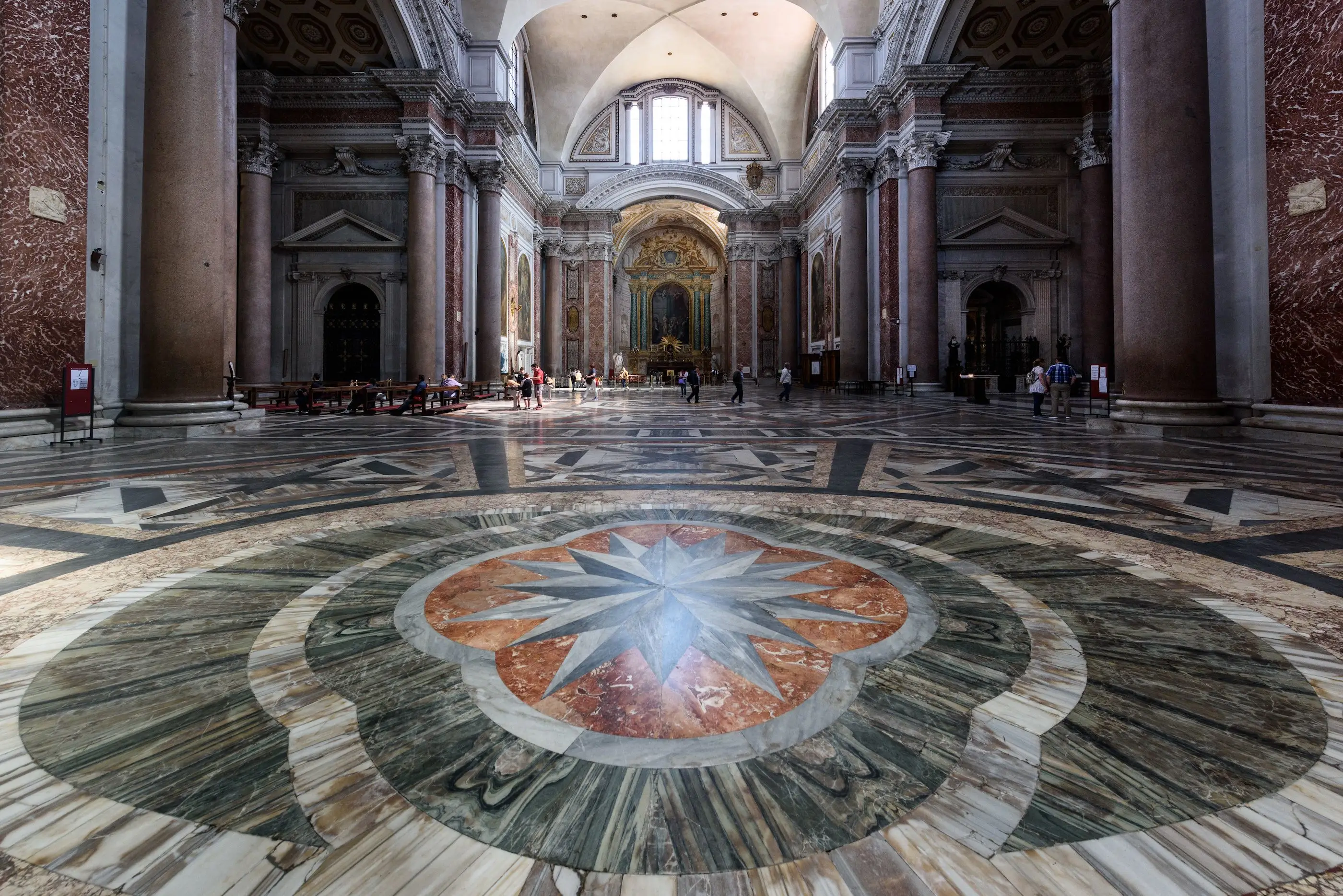
Basilica of Santa Maria degli Angeli
See a Michelangelo-designed church built within the former Baths of Diocletian.
Show More

Palazzo Massimo alle Terme
Visit one of Rome's greatest but most unheralded museums of antiquity.
Show More

Baths of Diocletian
Walk the ruins of what was once the largest themal baths in the ancient Roman world.
Show More

Basilica of Santa Maria degli Angeli
See a Michelangelo-designed church built within the former Baths of Diocletian.
Show More

Palazzo Massimo alle Terme
Visit one of Rome's greatest but most unheralded museums of antiquity.
Show More

Baths of Diocletian
Walk the ruins of what was once the largest themal baths in the ancient Roman world.
Show More

Basilica of Santa Maria degli Angeli
See a Michelangelo-designed church built within the former Baths of Diocletian.
Show More
prev
next

Day 4
Rome


Basilica of Santa Maria degli Angeli
 Highlight of Esquilino District
Highlight of Esquilino DistrictSee a Michelangelo-designed church built within the former Baths of Diocletian.
In 1561, almost 1000 years after the baths of Diocletian fell into disuse, Pope Pius IV decided to build a basilica consecrated to Our Lady of the Angels within the baths. He commisioned the 86-year-old Michelangelo to plan the church, making use of some of the existing structures of the baths. Today a visit to the basilica gives you an idea of the enormous size of the baths. The church was constructed at the site of the former frigidarium (a large cold pool which would be used to close the pores after using the hot baths) and incorporates several elements of the former thermae. The vestibule occupies the former tepidarium (a Roman-style relaxation room) and the imposing entrance is an exedra of the caldarium (a room with a hot plunge bath). Other highlights include the meridian solar line running across the floor, which still accurately calculates the length of the year and the summer and winter solstices. There is also an impressive organ with 5,400 tubes. It is capable of leaving those visitors lucky enough to hear it spellbound.

Palazzo Massimo alle Terme
 Highlight of Esquilino District
Highlight of Esquilino DistrictVisit one of Rome's greatest but most unheralded museums of antiquity.
This light-filled museum holds one of the best classical art collections in the world. The ground and first-floor feature famous Greek and Roman sculptures, mosaics and statues, as well as impressive sarcophagi and high reliefs. The second floor showcases the best preserved Roman frescoes in the world, which are considered the highlight of the museum. Originally located in Villa of Livia (the wife of Augustus) and Villa Farnesina, these colourful frescoes, sometimes covering an entire room, offer a unique view into life in ancient Rome and the critical importance of gardens, nature, and the villa atmosphere to upper echelon Romans. A must visit room is the painted garden room of Villa Livia. There is also a cinema room with a video showing a 3D reconstruction of the Villa Farnesina as it would have been, showing the layout of the rooms in the villa and the frescoes you had seen just moments before.

Baths of Diocletian
 Highlight of Esquilino District
Highlight of Esquilino DistrictWalk the ruins of what was once the largest themal baths in the ancient Roman world.
Covering an area of more than 13 hectares (some 32 acres), the bath complex was commissioned by Emperor Diocletian in 298 AD, with a capacity to host over 3,000 people (twice as many as the Baths of Caracalla). The baths were made of bricks, coated in marble and decorated with mosaics and sculptures. The complex included a gymnasium, a library, a large outdoor swimming pool and cold, hot, and tepid public baths. They remained open until 537 when the Goths cut off the aqueducts in an attempt to conquer Rome. After they fell into disrepair and were left abandoned. Even though only a small part of the public bath complex can be seen and visited, it is extremely impressive, with the possibility to see at some points the high ceilings the baths possessed. The interior includes part of the National Museum of Rome and a permanent exhibition on pre-historic populations of the area. In the outdoor part of the baths, it is possible to stroll through a sixteenth-century garden with nearly 400 works of art, including statues, sarcophagi and reliefs.

Basilica of Santa Maria degli Angeli
 Highlight of Esquilino District
Highlight of Esquilino DistrictSee a Michelangelo-designed church built within the former Baths of Diocletian.
In 1561, almost 1000 years after the baths of Diocletian fell into disuse, Pope Pius IV decided to build a basilica consecrated to Our Lady of the Angels within the baths. He commisioned the 86-year-old Michelangelo to plan the church, making use of some of the existing structures of the baths. Today a visit to the basilica gives you an idea of the enormous size of the baths. The church was constructed at the site of the former frigidarium (a large cold pool which would be used to close the pores after using the hot baths) and incorporates several elements of the former thermae. The vestibule occupies the former tepidarium (a Roman-style relaxation room) and the imposing entrance is an exedra of the caldarium (a room with a hot plunge bath). Other highlights include the meridian solar line running across the floor, which still accurately calculates the length of the year and the summer and winter solstices. There is also an impressive organ with 5,400 tubes. It is capable of leaving those visitors lucky enough to hear it spellbound.

Palazzo Massimo alle Terme
 Highlight of Esquilino District
Highlight of Esquilino DistrictVisit one of Rome's greatest but most unheralded museums of antiquity.
This light-filled museum holds one of the best classical art collections in the world. The ground and first-floor feature famous Greek and Roman sculptures, mosaics and statues, as well as impressive sarcophagi and high reliefs. The second floor showcases the best preserved Roman frescoes in the world, which are considered the highlight of the museum. Originally located in Villa of Livia (the wife of Augustus) and Villa Farnesina, these colourful frescoes, sometimes covering an entire room, offer a unique view into life in ancient Rome and the critical importance of gardens, nature, and the villa atmosphere to upper echelon Romans. A must visit room is the painted garden room of Villa Livia. There is also a cinema room with a video showing a 3D reconstruction of the Villa Farnesina as it would have been, showing the layout of the rooms in the villa and the frescoes you had seen just moments before.

Baths of Diocletian
 Highlight of Esquilino District
Highlight of Esquilino DistrictWalk the ruins of what was once the largest themal baths in the ancient Roman world.
Covering an area of more than 13 hectares (some 32 acres), the bath complex was commissioned by Emperor Diocletian in 298 AD, with a capacity to host over 3,000 people (twice as many as the Baths of Caracalla). The baths were made of bricks, coated in marble and decorated with mosaics and sculptures. The complex included a gymnasium, a library, a large outdoor swimming pool and cold, hot, and tepid public baths. They remained open until 537 when the Goths cut off the aqueducts in an attempt to conquer Rome. After they fell into disrepair and were left abandoned. Even though only a small part of the public bath complex can be seen and visited, it is extremely impressive, with the possibility to see at some points the high ceilings the baths possessed. The interior includes part of the National Museum of Rome and a permanent exhibition on pre-historic populations of the area. In the outdoor part of the baths, it is possible to stroll through a sixteenth-century garden with nearly 400 works of art, including statues, sarcophagi and reliefs.

Basilica of Santa Maria degli Angeli
 Highlight of Esquilino District
Highlight of Esquilino DistrictSee a Michelangelo-designed church built within the former Baths of Diocletian.
In 1561, almost 1000 years after the baths of Diocletian fell into disuse, Pope Pius IV decided to build a basilica consecrated to Our Lady of the Angels within the baths. He commisioned the 86-year-old Michelangelo to plan the church, making use of some of the existing structures of the baths. Today a visit to the basilica gives you an idea of the enormous size of the baths. The church was constructed at the site of the former frigidarium (a large cold pool which would be used to close the pores after using the hot baths) and incorporates several elements of the former thermae. The vestibule occupies the former tepidarium (a Roman-style relaxation room) and the imposing entrance is an exedra of the caldarium (a room with a hot plunge bath). Other highlights include the meridian solar line running across the floor, which still accurately calculates the length of the year and the summer and winter solstices. There is also an impressive organ with 5,400 tubes. It is capable of leaving those visitors lucky enough to hear it spellbound.
prev
next

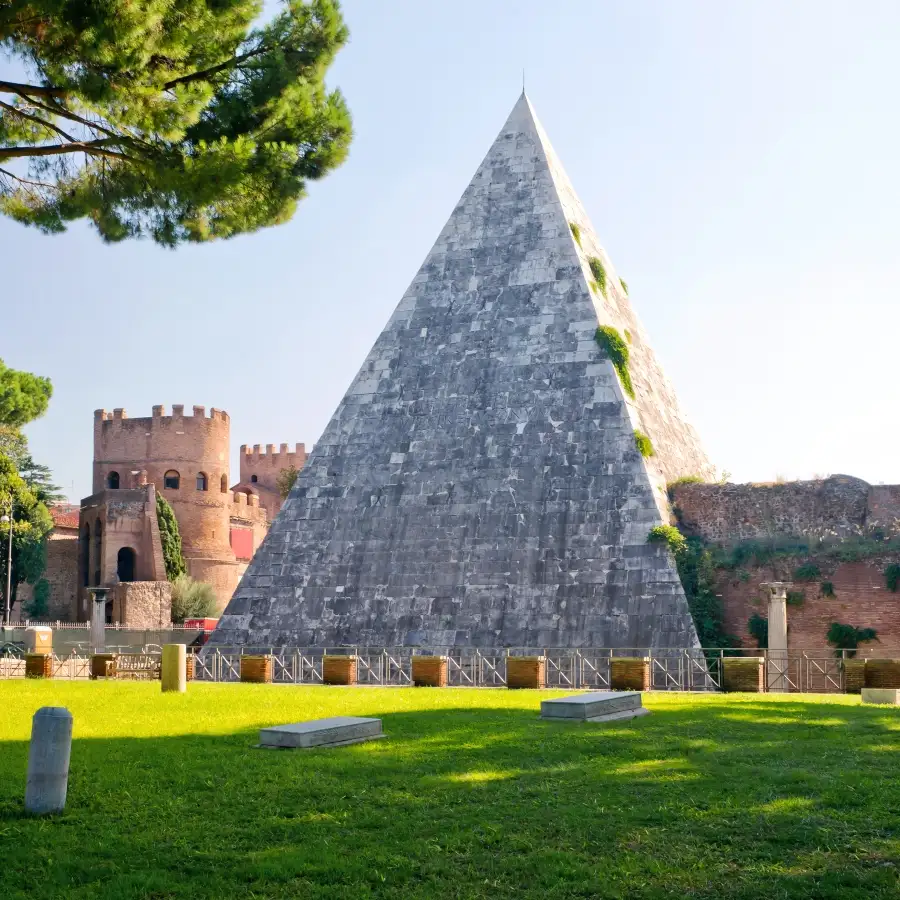
Day 5
Depart Rome
Day 5
Depart Rome


Morning/Mid-Day
South of Center
While most tourists stick to the Vatican and historic center of Rome, just south of the Palatine Hill lay several attractions that are definitely worth seeing. Start with a quick visit to the Circus Maximus, where chariot races were held in ancient Rome, and then make your way further south for a look at the fascinating pyramid tomb of Caius Cestius, one of classical Rome's best preserved ruins. It was built for a Roman aristocrat during a time when all things Egyptian were the rage. Just next to pyramid is the Protestant Cemetery, holding the earthly remains of Rome's non-Catholic residents, locals and foreigners alike, and not just Protestants. Within this beautiful cemetery, you will find the graves of the poets Keats and Shelley and Gregory Corso, as well as the Italian Marxist philosopher Antonio Gramsci. Farther up the road are the huge Baths of Caracalla - named after one of classical Rome's cruelest emperors.
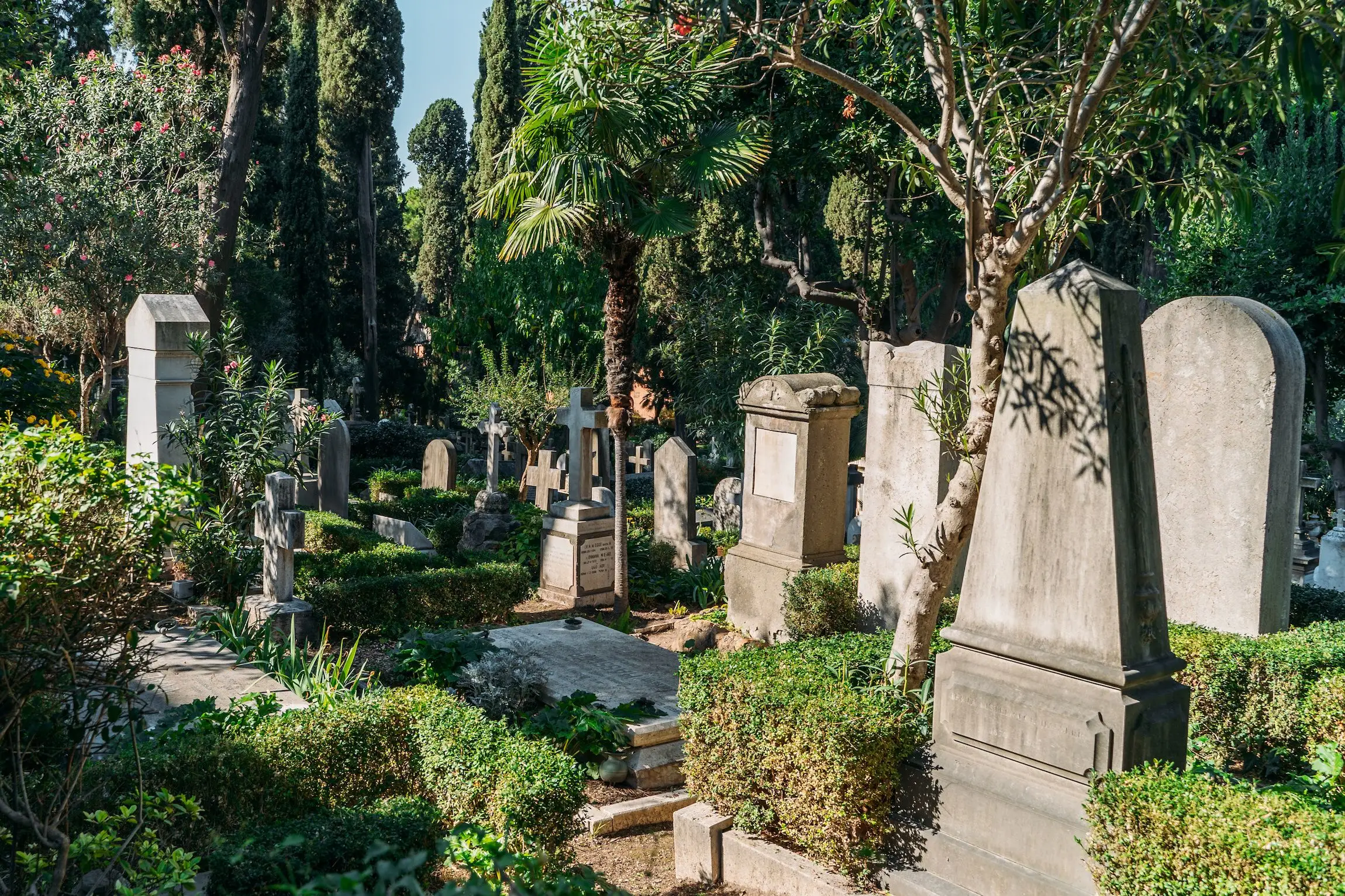
Protestant Cemetery
Visit the lovely final resting place of many famous non-Catholics who died in Rome.
Show More

Basilica of Saint Paul Outside the Walls
Venture even further south to discover this magnificent and usually missed basilica which holds the tomb of St. Paul and dates back to 324 AD.
Show More
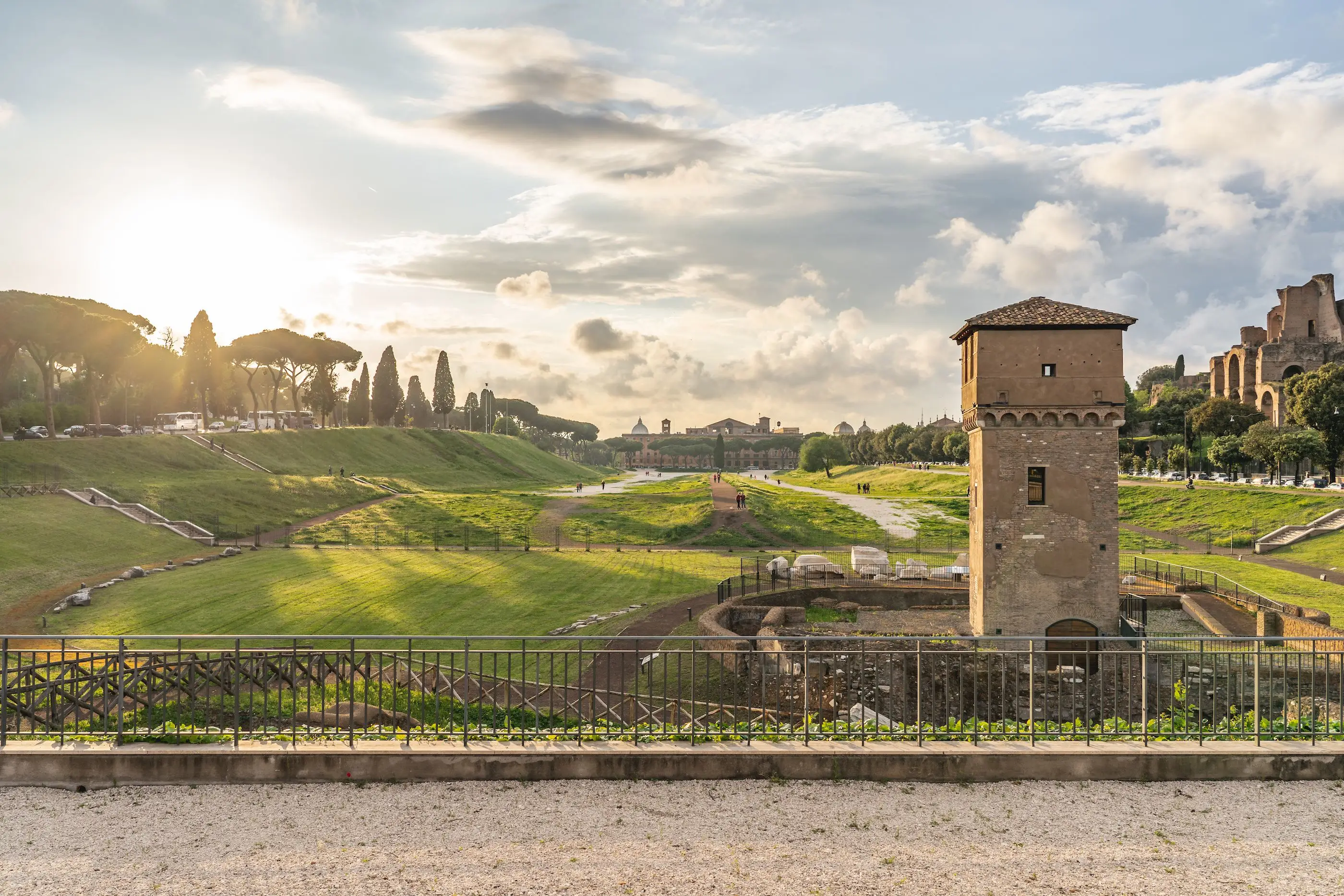
Circus Maximus
Watch the locals go for a jog or walk their dogs through what was once the most illustrious sporting venue in the ancient world, where frenzied crowds cheered on their favored team of charioteers in dramatic and sometimes deadly races.
Show More

Baths of Caracalla
Walk around one of the few lasting physical legacies of Emperor Caracalla and admire the structures and well-preserved mosaics of the baths and gyms.
Show More

Protestant Cemetery
Visit the lovely final resting place of many famous non-Catholics who died in Rome.
Show More

Basilica of Saint Paul Outside the Walls
Venture even further south to discover this magnificent and usually missed basilica which holds the tomb of St. Paul and dates back to 324 AD.
Show More

Circus Maximus
Watch the locals go for a jog or walk their dogs through what was once the most illustrious sporting venue in the ancient world, where frenzied crowds cheered on their favored team of charioteers in dramatic and sometimes deadly races.
Show More

Baths of Caracalla
Walk around one of the few lasting physical legacies of Emperor Caracalla and admire the structures and well-preserved mosaics of the baths and gyms.
Show More
prev
next

Day 5
Depart Rome


Protestant Cemetery
 Highlight of South of Center
Highlight of South of CenterVisit the lovely final resting place of many famous non-Catholics who died in Rome.
It may not look it from outside the cemetery walls, but it's actually a very romantic setting with tall cypresses and pine trees, and it's beautifully maintained and inhabited by numerous cats. The cemetery was created due to the fact that non-Catholics were not allowed to be buried in Rome's Catholic cemeteries. Since the earliest recorded grave dating from 1738, some 4,000 people have been buried here. The cemetery famously contains the mortal remains of the English romantic poets Johns Keats and Percy Shelley. Other famous tombs in the cemetery include those of the Italian Marxist philosopher Antonio Gramsci, the son of Goethe, and the American Beat poet Gregory Corso, who was buried here in 2001 at his request next to Shelley.

Basilica of Saint Paul Outside the Walls
 Highlight of South of Center
Highlight of South of CenterVenture even further south to discover this magnificent and usually missed basilica which holds the tomb of St. Paul and dates back to 324 AD.
Founded by the Emperor Constantine over the tomb of St. Paul, the church is one of Rome's four major papal basilicas. Well off the beaten path, those who do visit it are often surprised to have never heard of such a beautiful and impressive church. Decorated with mosaic tile, the interior is breathtaking. Visitors can also find portraits of every pope from St. Peter to Pope Francis.

Circus Maximus
 Highlight of South of Center
Highlight of South of CenterWatch the locals go for a jog or walk their dogs through what was once the most illustrious sporting venue in the ancient world, where frenzied crowds cheered on their favored team of charioteers in dramatic and sometimes deadly races.
The Circus Maximus lies in the valley between the Palatine and Aventine hills and is the largest uninterrupted open space in the city. It was the first and largest chariot racing circus in Rome, with the first factual reference to it dating from 328 BC. In the days of ancient Rome, the circus was the scene of great entertainment and chariot races and games were held here. Not much remains of it today, but the form of it can still be imagined.

Baths of Caracalla
 Highlight of South of Center
Highlight of South of CenterWalk around one of the few lasting physical legacies of Emperor Caracalla and admire the structures and well-preserved mosaics of the baths and gyms.
The huge baths are now the best-preserved and most splendid Imperial-era baths in Rome. Built between the years 212 and 216, the baths are one of the most impressive thermae that remains, a site that in its heyday could accommodate 1,600 bathers at a time. As you walk around the imposing walls of the bathhouse you can easily imagine what it would have been like in its glory and splendour. The mosaics on the ground floor are very well preserved and in some places you can even see remnants of games that were carved into the marble of the pool.

Protestant Cemetery
 Highlight of South of Center
Highlight of South of CenterVisit the lovely final resting place of many famous non-Catholics who died in Rome.
It may not look it from outside the cemetery walls, but it's actually a very romantic setting with tall cypresses and pine trees, and it's beautifully maintained and inhabited by numerous cats. The cemetery was created due to the fact that non-Catholics were not allowed to be buried in Rome's Catholic cemeteries. Since the earliest recorded grave dating from 1738, some 4,000 people have been buried here. The cemetery famously contains the mortal remains of the English romantic poets Johns Keats and Percy Shelley. Other famous tombs in the cemetery include those of the Italian Marxist philosopher Antonio Gramsci, the son of Goethe, and the American Beat poet Gregory Corso, who was buried here in 2001 at his request next to Shelley.

Basilica of Saint Paul Outside the Walls
 Highlight of South of Center
Highlight of South of CenterVenture even further south to discover this magnificent and usually missed basilica which holds the tomb of St. Paul and dates back to 324 AD.
Founded by the Emperor Constantine over the tomb of St. Paul, the church is one of Rome's four major papal basilicas. Well off the beaten path, those who do visit it are often surprised to have never heard of such a beautiful and impressive church. Decorated with mosaic tile, the interior is breathtaking. Visitors can also find portraits of every pope from St. Peter to Pope Francis.

Circus Maximus
 Highlight of South of Center
Highlight of South of CenterWatch the locals go for a jog or walk their dogs through what was once the most illustrious sporting venue in the ancient world, where frenzied crowds cheered on their favored team of charioteers in dramatic and sometimes deadly races.
The Circus Maximus lies in the valley between the Palatine and Aventine hills and is the largest uninterrupted open space in the city. It was the first and largest chariot racing circus in Rome, with the first factual reference to it dating from 328 BC. In the days of ancient Rome, the circus was the scene of great entertainment and chariot races and games were held here. Not much remains of it today, but the form of it can still be imagined.

Baths of Caracalla
 Highlight of South of Center
Highlight of South of CenterWalk around one of the few lasting physical legacies of Emperor Caracalla and admire the structures and well-preserved mosaics of the baths and gyms.
The huge baths are now the best-preserved and most splendid Imperial-era baths in Rome. Built between the years 212 and 216, the baths are one of the most impressive thermae that remains, a site that in its heyday could accommodate 1,600 bathers at a time. As you walk around the imposing walls of the bathhouse you can easily imagine what it would have been like in its glory and splendour. The mosaics on the ground floor are very well preserved and in some places you can even see remnants of games that were carved into the marble of the pool.
prev
next

What's Included In Rome in Five Days Trip

Pre-Paid Tours and Activities:
- Heart of the Empire - Private Tour of Ancient Rome & the Colosseum
- City Card for Rome, including discounts to many popular attractions

Pre-Paid Transportation:
- Public Transport Tickets for Rome
- Private Transfer from Rome Fiumicino to Hotel
- Private Transfer to Rome Fiumicino or Ciampino Airport

Go Real Travel Mobile App:
- Itinerary Plan & Reservations Info
- Points of Interest
- Detailed Travel Information
- Maps & Directions
Other Trips You May Like

7 Days
From$2139USD

14 Days
From$3559USD

10 Days
From$2980USD

10 Days
From$4033USD

7 Days
From$1899USD
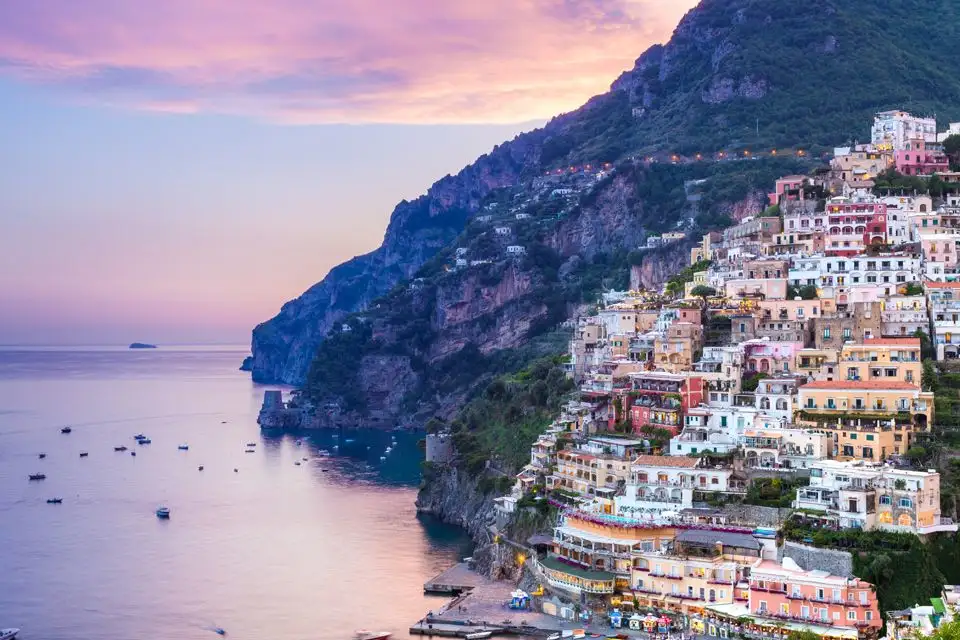
7 Days
From$2995USD
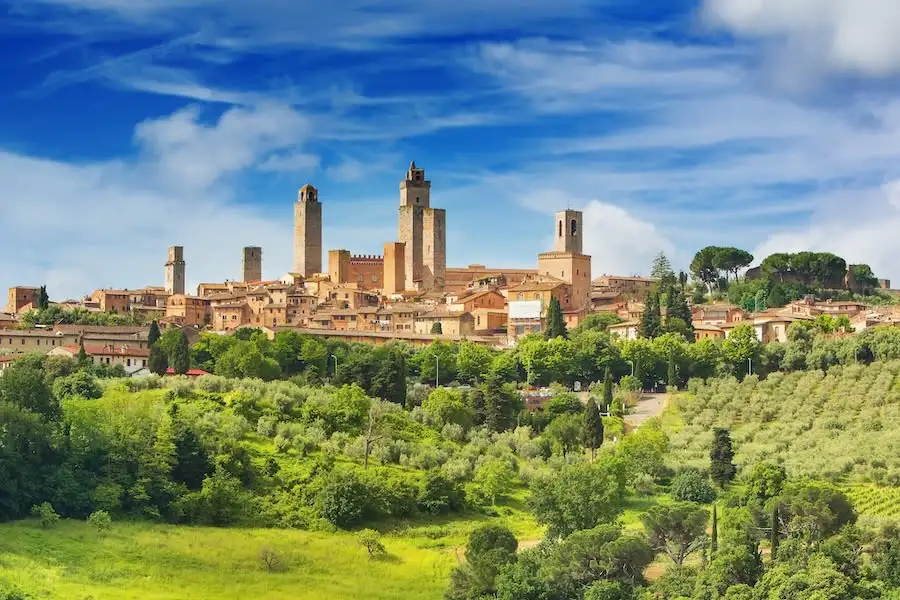
10 Days
From$2199USD

11 Days
From$4300USD

10 Days
From$2645USD
Paris, Rome, Florence: An Unforgettable 10-Day Itinerary to Europe's Most Iconic Destinations

Italy, France

7 Days
From$2139USD

14 Days
From$3559USD

10 Days
From$2980USD

10 Days
From$4033USD

7 Days
From$1899USD

7 Days
From$2995USD

10 Days
From$2199USD

11 Days
From$4300USD

10 Days
From$2645USD
Paris, Rome, Florence: An Unforgettable 10-Day Itinerary to Europe's Most Iconic Destinations

Italy, France
prev
next
Featured Blogs
prev
next
Our Customers Say It Best
Marianne Strydom, Paarl, South Africa
I just wanted to thank you for organizing an amazing trip for me – I packed in so much in such a short period of time and everything was just perfect. The way you do things makes it possible to really get to know the destination, which for me as a travel agent could not have been better. 

Otto Chuy, Los Angeles, California
I am still surprised how everything worked as planned, without a hitch. All instructions in your itinerary were precise and correct. Your suggestions and comments in each of the locations we went to were very helpful. All your guides, without exception, were wonderful and exactly on time. 

Malini Dutta, Boston, Massachusetts
We can't thank you enough for the detailed plans, maps, and suggestions. It really felt that someone was holding our hands and showing us around. We had all the excitement of discovering foreign lands, with none of the problems that can happen while negotiating unfamiliar places. In fact, all the cities felt like home within a few hours of arriving and exploring. 

Bev and Mark Frankel, Williamsburg, Virginia
We could not be more pleased with Go Real Travel! You took the guess work out of things like public transport but still managed to allow us the freedom to tour as we wanted. Our guides were exceptional and every time I saw a Viking Cruise tour of 25 people, I realized the quality experience we were getting with Go Real. 

Marianne Strydom, Paarl, South Africa
I just wanted to thank you for organizing an amazing trip for me – I packed in so much in such a short period of time and everything was just perfect. The way you do things makes it possible to really get to know the destination, which for me as a travel agent could not have been better. 

Otto Chuy, Los Angeles, California
I am still surprised how everything worked as planned, without a hitch. All instructions in your itinerary were precise and correct. Your suggestions and comments in each of the locations we went to were very helpful. All your guides, without exception, were wonderful and exactly on time. 

Malini Dutta, Boston, Massachusetts
We can't thank you enough for the detailed plans, maps, and suggestions. It really felt that someone was holding our hands and showing us around. We had all the excitement of discovering foreign lands, with none of the problems that can happen while negotiating unfamiliar places. In fact, all the cities felt like home within a few hours of arriving and exploring. 

Bev and Mark Frankel, Williamsburg, Virginia
We could not be more pleased with Go Real Travel! You took the guess work out of things like public transport but still managed to allow us the freedom to tour as we wanted. Our guides were exceptional and every time I saw a Viking Cruise tour of 25 people, I realized the quality experience we were getting with Go Real. 



Explore cities in more detail

Milan
Milan is Italy’s most forward-looking city. An international center for fashion, fine dining, and design, it seems as though Milanese people breathe style. From the gleam on your wine glass to the twists of its cathedral’s spires, everything in Milan is finished to perfection. Home to the Italian stock exchange, a world-famous fashion industry, and a frantic business district, Milan is fast-paced and commercially minded. The shopping in Milan is second to none. At the Galleria Vittorio Emanuele II, one of the world’s oldest shopping malls, a glass-iron ceiling soars over brands like Louis Vuitton, Gucci, Massimo Dutti, and Amani. Along with the fashion, Milan’s cathedral, castle, and canals are also must-sees. But to view the city’s most prized possession - Leonardo da Vinci’s Last Supper, you must make an appointment. Tickets to view this mural sell out weeks in advance. It is truly a bucket-list worthy work of art. After a day taking in all the glamor and culture, take a seat in one of Milan’s well-appointed eateries. The Navigli Quarter is packed with restaurants, bars, and cafes, perfect for a relaxed Aperol spritz or pizza along the city’s canals.

Learn About Milan
Build Milan Trip

Cinque Terre
Cinque Terre, a string of five fishing villages in the Liguria region of Italy, is a rare snapshot of a traditional way of life. Rustic and charming, these clusters of pastel houses clinging to steep Mediterranean cliffs hold a special allure. Hiking between the five villages is a popular way to experience the rugged Mediterranean landscape close up. There are no roads here — the only other way to get between the villages is by boat or train. Seafood, hauled in from the azure waters of the sea that laps against the rocky shore, is abundant and delicious here. It pairs well with the local wine, and perhaps a plate of olives. Cinque Terre is a place to take it slow, to breathe in the fresh sea air and bask in the balmy climate, many miles from the chaos and frenzy of the modern world.

Learn About Cinque Terre
Build Cinque Terre Trip
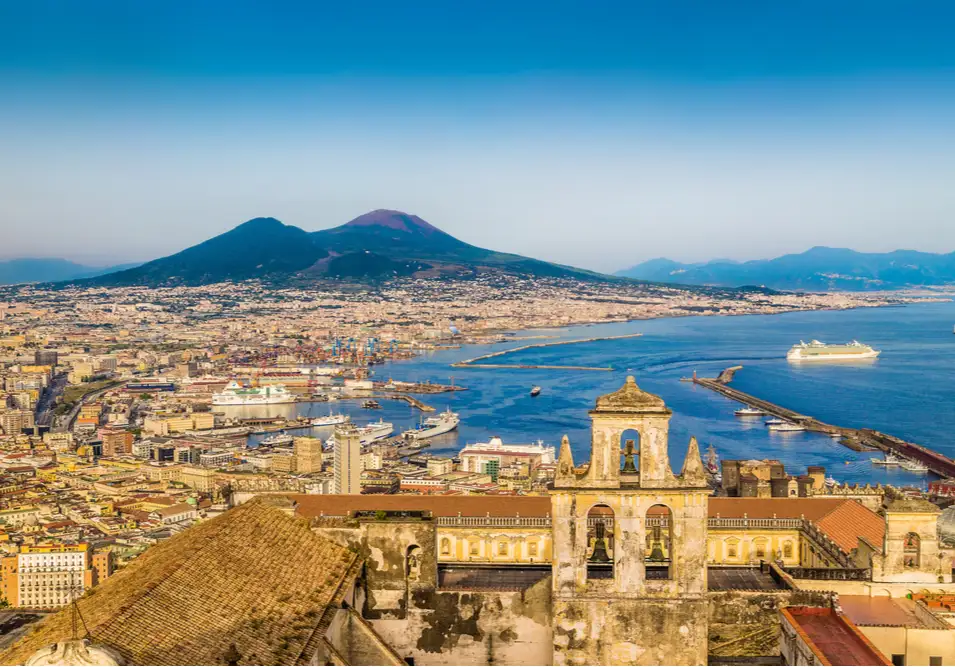
Naples
Gritty and chaotic Naples calls to travelers who want to experience the real Italy. Pressed along the coast of Campania, hilly Naples is jammed with maze-like streets, strung with outdoor clotheslines, descending toward the sea below. A much deserved UNESCO World Heritage site, Naples is famous for its churches, museums, castles, and catacombs. As you navigate the city, you’ll find yourself immersed by its culture and history. You can easily occupy a full day gazing at churches like the Naples Cathedral, San Francesco di Paola, and Cappella Sansevero. If you cast your eyes toward the Gulf of Naples, you’ll see Mount Vesuvius looming over the harbor. This foreboding volcano erupted in AD 79. Not far from the inner city — less than an hour by train — you’ll find the ancient town of Pompeii, its dramatic ruins still preserved in ash from the eruption. One of the best things you can do in Naples is to eat. This is the city where pizza was born. Propped up by its ripe tomatoes, local cheeses, and fresh fish, food from Naples has come to define what many see as the height of Italian cuisine. Everything you taste in Naples seems like a delicacy. Authentic and vivid, Naples is a true Italian city where the ancient world meets the modern-day with a bang.

Learn About Naples
Build Naples Trip

Rome
One of the must-sees of Italy, and indeed all of Europe, Rome is a city with history flowing through its veins. There is an endless amount to see, do, and learn here, with something for every taste and disposition. Rome was the center of Western civilization for a Millenium and during that time, accumulated a list of historical and cultural treasures that no other destination can truly match. The Pantheon, Colosseum, Roman Forum, and Cirus of Maxentius are just a few examples of what can be seen and experienced in Rome, which at times feels more like a giant outdoor museum than a city. At Rome’s heart, you’ll find the Vatican, home of the Roman Catholic Church and the Pope. Here visitors can see the legendary Sistine Chapel. Transcending a mere building, the chapel is a walk-in work of art. Although historical sights can be found on just about every corner, it’s entirely possible to fill a day just wandering around Rome. The city’s charming streets and open Piazzas are filled with beautiful sights and places to sit, grab the best Cappuccino in the world, and enjoy the view.

Learn About Rome
Build Rome Trip
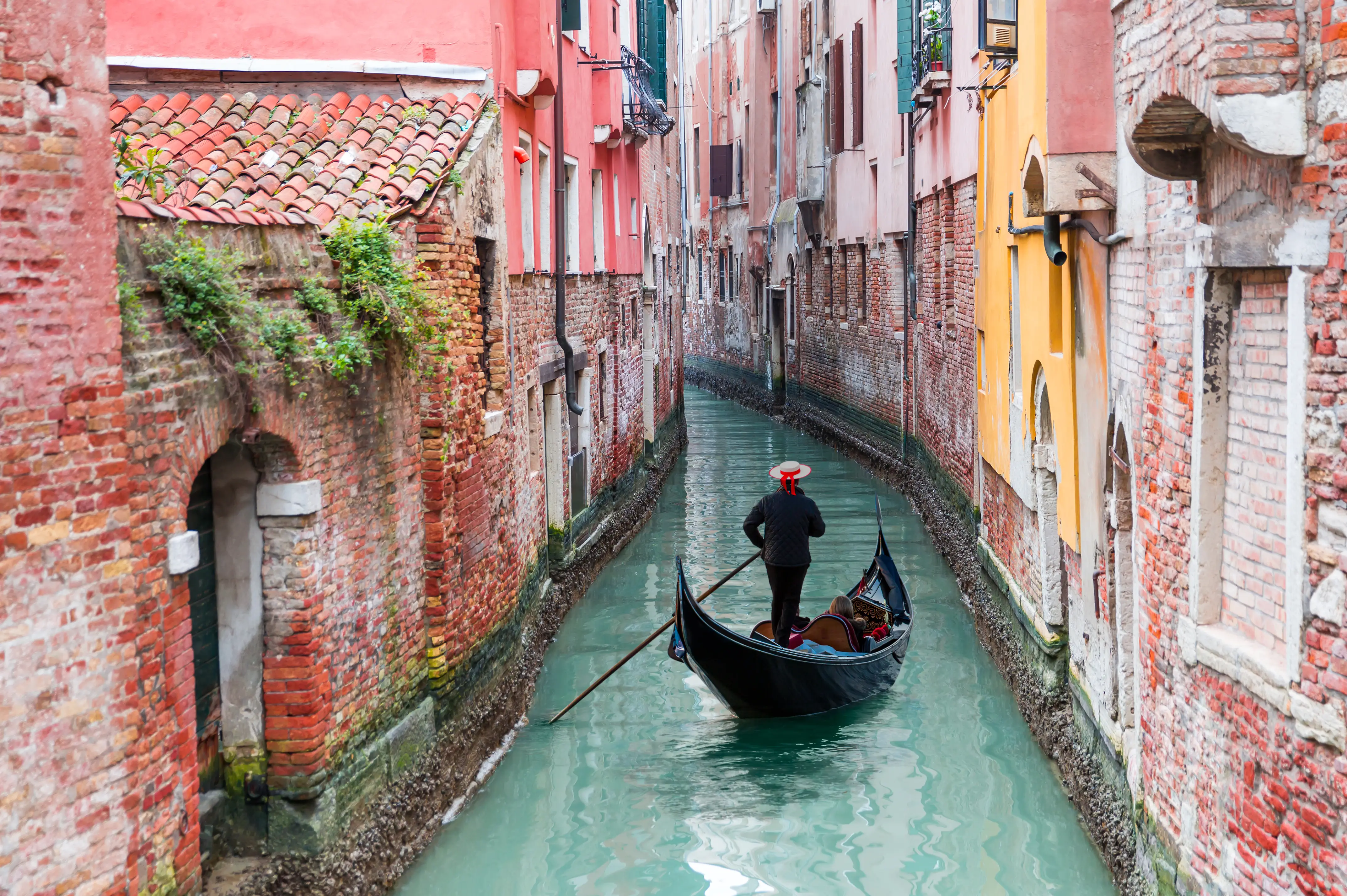
Venice
Venice is a city with no equal. Built on a series of islands on a lagoon, it was once a powerful city-state. Echoes of that old magnificence can be seen everywhere here, from the stunning buildings that rise out of the canals, to the bridges that arc across them. Take a Gondola ride through the canals that form the city’s veins, or wander through the winding streets drinking in the sights. You’ll see Venice attracts tourists in huge numbers, and that’s with good reason. It’s home to a seemingly limitless amount of art, culture, history, and architecture. St Mark’s Basilica, the Doge’s Palace, and the Campanile di San Marco just barely scratch the surface. There’s a 700-year-old market, Rialto, which is still open today. The Ponte di Rialto bridge connects the neighborhoods of San Marco and San Polo, stretching across the Grand Canal. Venice has weathered the last several centuries with elegance and pride, a place that will surpass even your highest expectations.

Learn About Venice
Build Venice Trip
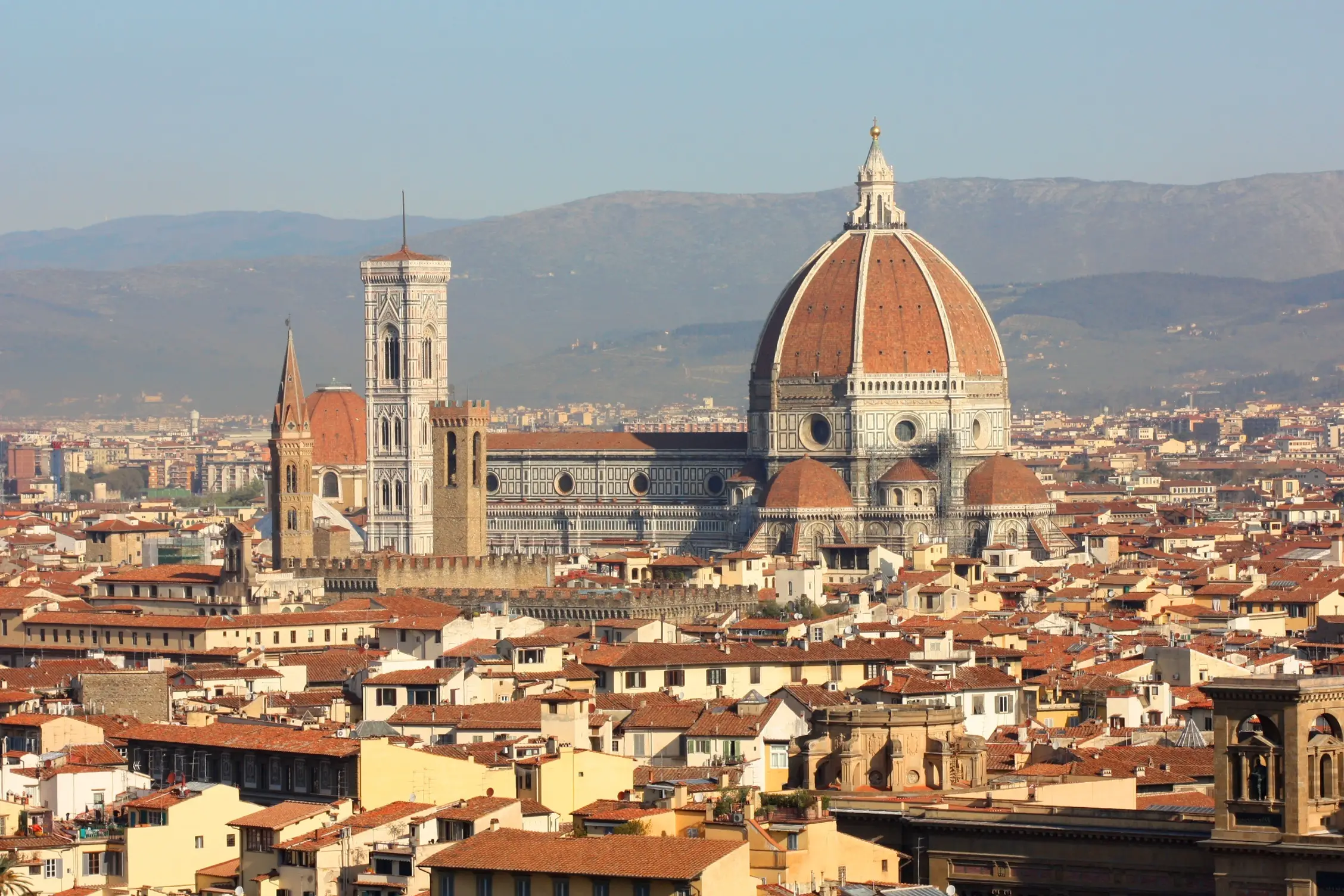
Florence
Culture and history are thick in the air in Florence. Located on the banks of the Arno River in Tuscany, Florence’s past is deeply compelling. The birthplace of the Renaissance, Florence is where innovators like Dante, Machiavelli, Michelangelo, and Da Vinci made their fortunes. Centuries of art, politics, and commerce have left their mark on every stone in this Northern Italian city. In the 15th and 16th centuries, Florentine banks funded new enterprises that went on to change the history of the world. Powerful families like the Medici’s financed some of the finest art in history and pioneered new ways of doing statecraft and politics. As you stand in the Piazzale Michelangelo and gaze upon the city below it’s hard to take it all in at once. It feels like behind every door in Florence might hide a work of genius. Michelangelo’s David and Botticelli’s Primavera can be found just a short walk away. After a long day wandering the streets and gazing at art, fueled by exquisite coffee and gelato, relax like the locals do: with a glass of some of the best wine in the world.

Learn About Florence
Build Florence Trip

Milan
Milan is Italy’s most forward-looking city. An international center for fashion, fine dining, and design, it seems as though Milanese people breathe style. From the gleam on your wine glass to the twists of its cathedral’s spires, everything in Milan is finished to perfection. Home to the Italian stock exchange, a world-famous fashion industry, and a frantic business district, Milan is fast-paced and commercially minded. The shopping in Milan is second to none. At the Galleria Vittorio Emanuele II, one of the world’s oldest shopping malls, a glass-iron ceiling soars over brands like Louis Vuitton, Gucci, Massimo Dutti, and Amani. Along with the fashion, Milan’s cathedral, castle, and canals are also must-sees. But to view the city’s most prized possession - Leonardo da Vinci’s Last Supper, you must make an appointment. Tickets to view this mural sell out weeks in advance. It is truly a bucket-list worthy work of art. After a day taking in all the glamor and culture, take a seat in one of Milan’s well-appointed eateries. The Navigli Quarter is packed with restaurants, bars, and cafes, perfect for a relaxed Aperol spritz or pizza along the city’s canals.

Learn About Milan
Build Milan Trip

Cinque Terre
Cinque Terre, a string of five fishing villages in the Liguria region of Italy, is a rare snapshot of a traditional way of life. Rustic and charming, these clusters of pastel houses clinging to steep Mediterranean cliffs hold a special allure. Hiking between the five villages is a popular way to experience the rugged Mediterranean landscape close up. There are no roads here — the only other way to get between the villages is by boat or train. Seafood, hauled in from the azure waters of the sea that laps against the rocky shore, is abundant and delicious here. It pairs well with the local wine, and perhaps a plate of olives. Cinque Terre is a place to take it slow, to breathe in the fresh sea air and bask in the balmy climate, many miles from the chaos and frenzy of the modern world.

Learn About Cinque Terre
Build Cinque Terre Trip

Naples
Gritty and chaotic Naples calls to travelers who want to experience the real Italy. Pressed along the coast of Campania, hilly Naples is jammed with maze-like streets, strung with outdoor clotheslines, descending toward the sea below. A much deserved UNESCO World Heritage site, Naples is famous for its churches, museums, castles, and catacombs. As you navigate the city, you’ll find yourself immersed by its culture and history. You can easily occupy a full day gazing at churches like the Naples Cathedral, San Francesco di Paola, and Cappella Sansevero. If you cast your eyes toward the Gulf of Naples, you’ll see Mount Vesuvius looming over the harbor. This foreboding volcano erupted in AD 79. Not far from the inner city — less than an hour by train — you’ll find the ancient town of Pompeii, its dramatic ruins still preserved in ash from the eruption. One of the best things you can do in Naples is to eat. This is the city where pizza was born. Propped up by its ripe tomatoes, local cheeses, and fresh fish, food from Naples has come to define what many see as the height of Italian cuisine. Everything you taste in Naples seems like a delicacy. Authentic and vivid, Naples is a true Italian city where the ancient world meets the modern-day with a bang.

Learn About Naples
Build Naples Trip

Rome
One of the must-sees of Italy, and indeed all of Europe, Rome is a city with history flowing through its veins. There is an endless amount to see, do, and learn here, with something for every taste and disposition. Rome was the center of Western civilization for a Millenium and during that time, accumulated a list of historical and cultural treasures that no other destination can truly match. The Pantheon, Colosseum, Roman Forum, and Cirus of Maxentius are just a few examples of what can be seen and experienced in Rome, which at times feels more like a giant outdoor museum than a city. At Rome’s heart, you’ll find the Vatican, home of the Roman Catholic Church and the Pope. Here visitors can see the legendary Sistine Chapel. Transcending a mere building, the chapel is a walk-in work of art. Although historical sights can be found on just about every corner, it’s entirely possible to fill a day just wandering around Rome. The city’s charming streets and open Piazzas are filled with beautiful sights and places to sit, grab the best Cappuccino in the world, and enjoy the view.

Learn About Rome
Build Rome Trip

Venice
Venice is a city with no equal. Built on a series of islands on a lagoon, it was once a powerful city-state. Echoes of that old magnificence can be seen everywhere here, from the stunning buildings that rise out of the canals, to the bridges that arc across them. Take a Gondola ride through the canals that form the city’s veins, or wander through the winding streets drinking in the sights. You’ll see Venice attracts tourists in huge numbers, and that’s with good reason. It’s home to a seemingly limitless amount of art, culture, history, and architecture. St Mark’s Basilica, the Doge’s Palace, and the Campanile di San Marco just barely scratch the surface. There’s a 700-year-old market, Rialto, which is still open today. The Ponte di Rialto bridge connects the neighborhoods of San Marco and San Polo, stretching across the Grand Canal. Venice has weathered the last several centuries with elegance and pride, a place that will surpass even your highest expectations.

Learn About Venice
Build Venice Trip

Florence
Culture and history are thick in the air in Florence. Located on the banks of the Arno River in Tuscany, Florence’s past is deeply compelling. The birthplace of the Renaissance, Florence is where innovators like Dante, Machiavelli, Michelangelo, and Da Vinci made their fortunes. Centuries of art, politics, and commerce have left their mark on every stone in this Northern Italian city. In the 15th and 16th centuries, Florentine banks funded new enterprises that went on to change the history of the world. Powerful families like the Medici’s financed some of the finest art in history and pioneered new ways of doing statecraft and politics. As you stand in the Piazzale Michelangelo and gaze upon the city below it’s hard to take it all in at once. It feels like behind every door in Florence might hide a work of genius. Michelangelo’s David and Botticelli’s Primavera can be found just a short walk away. After a long day wandering the streets and gazing at art, fueled by exquisite coffee and gelato, relax like the locals do: with a glass of some of the best wine in the world.

Learn About Florence
Build Florence Trip
prev
next


 Map of Your Itinerary Route
Map of Your Itinerary Route
Zoom In to the cities to see your itinerary in more detail


 4.8
4.8 
